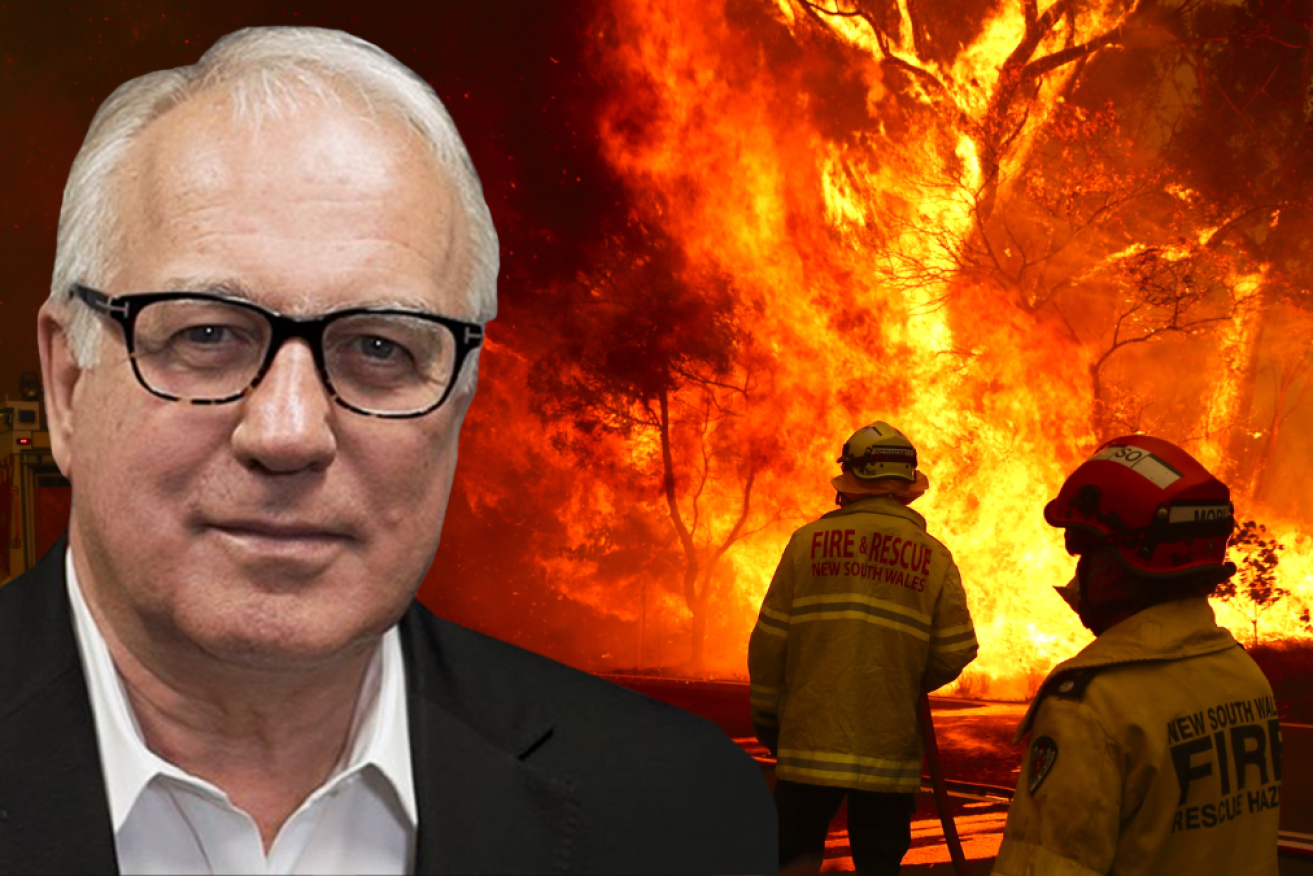Alan Kohler: The new bushfire warning system is in danger of ‘crying wolf’


The language used in bushfire warning systems is important, writes Alan Kohler. Photo: TND/Getty
The NSW Education Department recently closed 20 schools on the south coast of the state and told 3000 students to stay home after the Rural Fire Service (RFS) issued a “catastrophic” fire warning for the area with a predicted temperature of 34 degrees.
Fair enough, and better to be safe than sorry, except it was September 19 and the ground was still wet from winter. At that time there was little danger of a fire, let alone a catastrophic one.
I realise I’m going out on a limb here by second-guessing the RFS, which is just trying to do its job and keep everyone safe using the nationally agreed fire warning system.
But there are serious problems with that system, not least of which is the use of the word “catastrophic”. Words are important, and that is a big, muscular absolute, and apart from the crime of semantic torture, the more false catastrophes that are predicted before the real one comes along, the less likely people are to take the word seriously.
Taking it to the next level
The official Australian Fire Danger Rating System (AFDRS), administered by the National Council for Fire and Emergency Services (AFAC), has been operating since 2020. It has four levels – moderate, high, extreme and catastrophic.
The new system replaced the McArthur Forest Fire Danger Index developed in 1967 by CSIRO scientist, AG McArthur, which had five levels, ranging from low to extreme.
Leaving the previous highest rating there as the second highest in the new system is confusing. There was theoretically a level above extreme, called Code Red, for when the index went above 100, but it was never used because the index didn’t go above 100.
How ‘catastrophic’ came to be added, and the number of levels reduced to four, is hard to pin down. I was told that it came out of the royal commission into the 2009 Victorian bushfires, but there’s no mention of it in the recommendations.
The AFAC website says the Australian government and all state and territory governments “recognised the development of a new national fire danger rating system as a national priority in 2014”. Scoping was undertaken in 2015 and a five-year program for development and implementation was agreed upon.
Everyone then argued about it for four years, and in 2019, when there were some more genuinely catastrophic bushfires, then prime minister Scott Morrison chose that moment to go to Hawaii, and another – national – royal commission was called to show that the government actually did care about it.

PM Scott Morrison snapped on holiday in Hawaii late in 2019.
In 2020, that royal commission report basically told all the emergency services bodies to stop mucking about and either change the fire warning system or leave it with McArthur. They changed it.
The big problem with the old system, not really related to McArthur’s five ratings, was that at ‘Extreme’, people were told they had the option to stay or go.
I remember being alarmed on Saturday, February 7, 2009, when Victorians in the path of the fires were being told to decide whether to leave or to stay and defend their homes. The temperature was 43 degrees and there was a ferocious north wind; it was obvious that anyone remotely close to a fire should have run away, but a lot of people died defending their properties.
So as the 2019-20 royal commission found, there clearly needed to be some level of fire danger where people are told to evacuate, no ifs or buts.
But ‘catastrophic’?
Like everything fed into the mincer of government, the word is now starting to lose its meaning. It has become a bureaucratic term that means “one level above extreme”, and is no longer the adjective for the absolute noun, catastrophe.
In a way, it’s part of a global trend of threat exaggeration, especially by the media – we have, in short, a pandemic of catastrophising.
In 2022, the Financial Times nominated ‘polycrisis’ as word of the year, which was subsequently endorsed by the World Economic Forum, and there’s a new book out called Permacrisis, by former UK Chancellor of the Exchequer Gordon Brown, with Mohamed El-Erian, president of Queens College and former chief economic adviser at Allianz, and Michael Spence, professor of management at Stanford University.
Too many miles on our catastrophic clock
‘Crisis’ has become the most overused word in the English language, and the crises are not just coming one at a time, they overlap, as polycrises: Pandemic, climate change, AI, war, economy, housing crisis, disability, and aged care.
That’s not to say those things aren’t all bad, even terrible, just that the word ‘crisis’ is getting exhausted, a V8 Commodore with a million miles on the clock.
The problem with fire danger ratings is that if the word ‘catastrophic’ gets exhausted, it won’t be just unfortunate, but dangerous. We’ve all heard the parable of the boy who cried wolf.
There’s another deeper problem with the current system that has nothing to do with semantics.
The system invented by AG McArthur was based on sophisticated indexes entirely determined by the weather – if it was hot, dry and windy, the fire danger was ‘high’; if it was really hot, dry and windy, as determined by the McArthur system, it was ‘extreme’.
The new system requires data on fuel load in the vegetation and moisture on the ground as well, which is difficult and expensive to collect.
Andrew Sturgess, Australia’s first qualified fire behaviour analyst, formerly with Queensland Fire and Emergency Services and now running his own firm, FireSight, told me that data collection is not being properly funded, and “it’s not clear who’s responsible for the assumptions about fuel inputs”.
“There are clear gaps in who enters the data, so we don’t have the quality of inputs that we need to get really confident fire danger ratings out of the new system,” he said.
In other words, we’re heading into an El Nino fire season like the ones in 2009 and 2019 with a fire danger warning system that may be a mess, and not fit for purpose.
How many non-catastrophes will be called catastrophic?
And how often will the fire authorities simply not know enough to apply the right rating, either because there wasn’t enough funding or because no one knew whose job it was to collect the data?
Let’s hope we’re not having another grim royal commission this time next year.
Alan Kohler writes twice a week for The New Daily. He is finance presenter on ABC News and founder of Eureka Report








